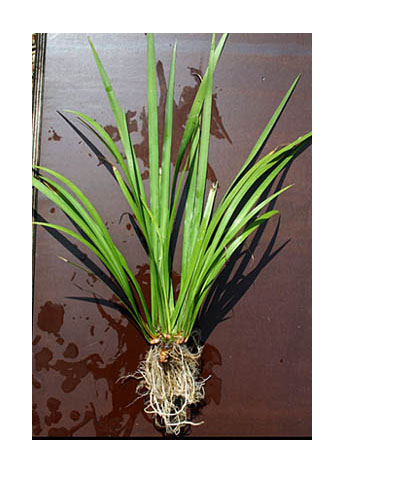Butch
Latin: Acorus Calamus
Therapeutic Action:
The Cree Indians of Northern Alberta use Calamus for a number of medicinal reasons including: as an analgesic for the relief of toothache or headache, for oral hygiene to cleanse and disinfect the teeth, the fight the effects of exhaustion or fatigue, and to help cure/prevent a hangover. Other Native tribes used it to treat a cough, made a decoction as a carminative and as an infusion for cholic. The Dakotas use calamus to treat diabetes, and there are several reported cases where of the root had cured people who had been given up by Western medicine. When calamus root was chewed regularly by the Indians, they would be miraculously cured of this disease within a matter of months. The Sioux used the whole plant, making aromatic garlands from the leaves and using the root as a tea for bowel pains, or rubbed the chewed root on the skin for a general illness cure. Sweet flag has been used in Asia for at least the last 2000 years for a number of beneficial reasons. The ancient Chinese used it to lessen swelling and for constipation. In India, Ayurvedic medicinal practice has used the magical root to cure fevers, for asthma and bronchitis, and as an all around sedative. The root was also used by the ancient Greeks and included in the traditional remedies of many other European cultures. During the middle ages calamus was an admixture in several of the ancient, psychoactive, "witches flying ointments", often being mixed with solanacious herbs. The root was also well-known in Biblical times and mentioned in Exodus 30: 22-25 as one of the ingredients of the "holy anointing oil". Calamus was also known to many early American settlers and used for a number of folk remedies. Walt Whitman even wrote poetry about his beloved herb in "Leaves of grass". Calamus was also widely used by Canadian Trappers working for the Hudson Bay Company, using it as a stimulant, chewing a small piece whenever tired. The unpeeled, dried rhizome was listed in the U.S. Pharmacopoeia until 1916 and in the National Formulary until 1950, for medicinal use on humans. In China, Calamus Root is considered to have anti-arrhythmic, hypotensive, vasodilatory, anti-tussive, anti-bacterial and expectorant properties. Calamus has been historically used for lack of mental focus, stomach problems, acidity, and as an aid to quit tobacco smoking.
References:
- Nadkarni, Vol I. Pages 35-37
- Paranjape Pages 271-273
- CRC Handbook of Medicinal Herbs by Dukes Page 14
- Dukes, Page 14-15
Used in:
- Brain-Act Capsules
- Calmro
- Gastrox Tablets
- Livonex Tablets
- Unexozim Tablets / Unexozim Syrup
- Brain-Act Syrup

Copyright 2013 Unexo Laboratories Pvt. Ltd. All Rights Reserved. Designed & Developed By: Credence Technologies


